Part 37: Marshall Islands: February 3, 1944

We're gaining control of the Marshalls, but we need to push harder if we want to secure them quickly.
Allied Turn 9 (USA): February 3, 1944
Rain, Dry
After the previous day of ominous clouds, the storm bursts upon us.
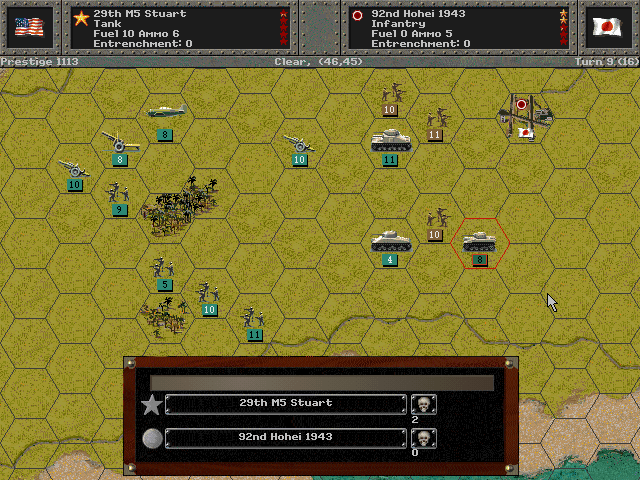
Most of our units take the bad weather as a time to resupply, but the M5 tries an attack. It does not go well.
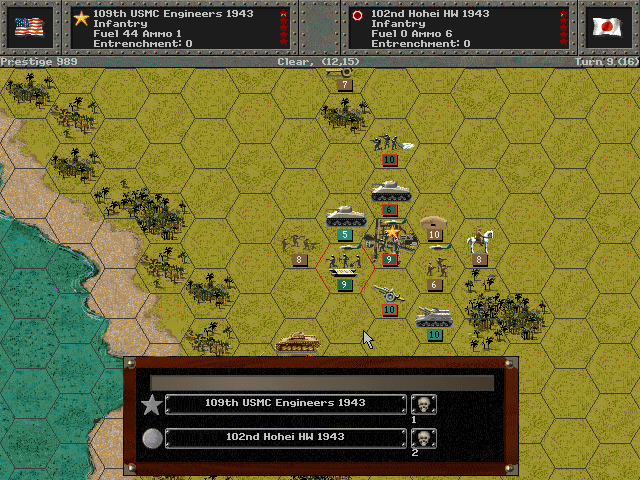
We've got solid control of the airfield on Eniwetok, but there are still many enemy units to eliminate.
Axis Turn 9 (Japan): February 3, 1944
Rain, Dry

Some ineffectual fighting is observed on the east side of Eniwetok.
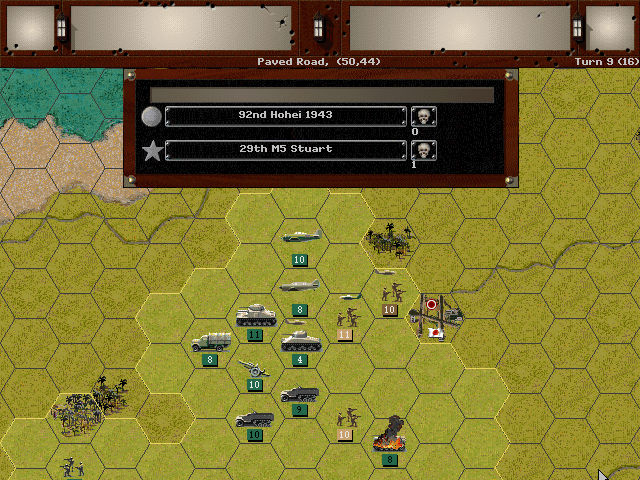
The M5 tanks take another loss.

A surprise unit of Senpaku Kohei shows up in the sector we had thought was cleared. It threatens to disrupt our ability to get all units moving forward.
Allied Turn 10 (USA): February 3, 1944
Cloudy, Dry
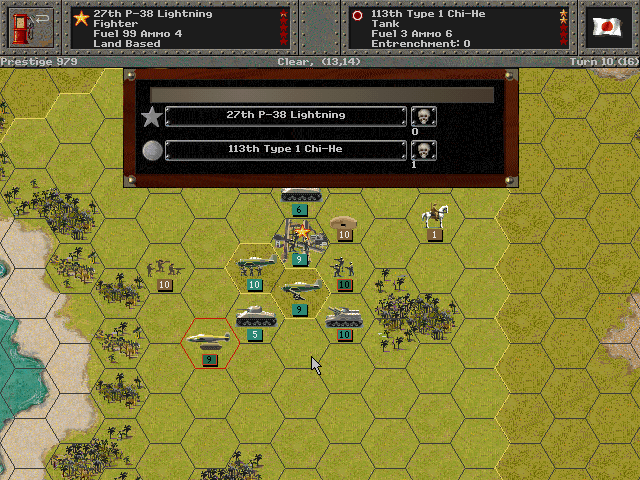
A break in the weather lets us hunt down some of the scattered units on Eniwetok's western side.
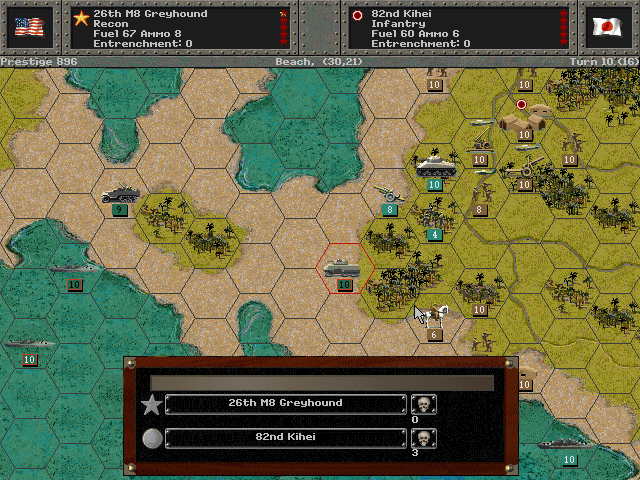
Reinforcements are arriving to the new front line on the other end of the island.
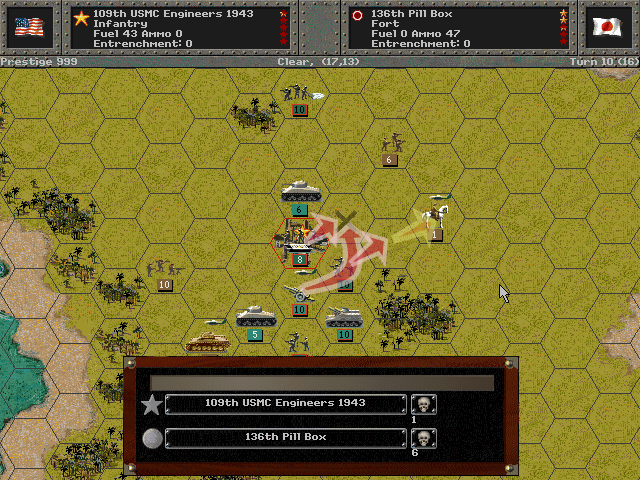
The last pillbox near the airfield is destroyed.
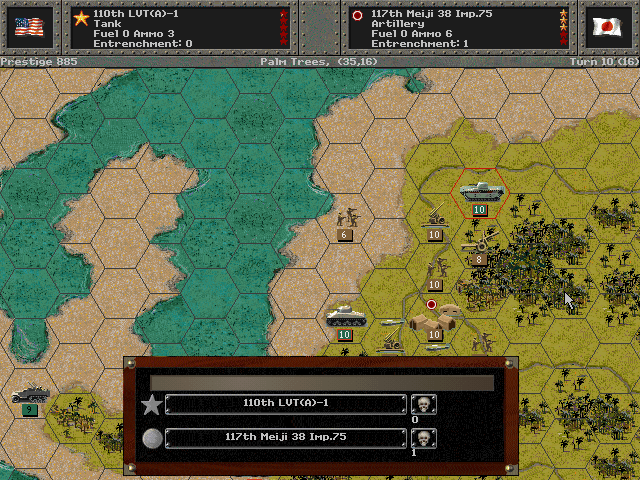
Having completed its circuit of the east side, the LVT snipes at the rear of the Japanese position.
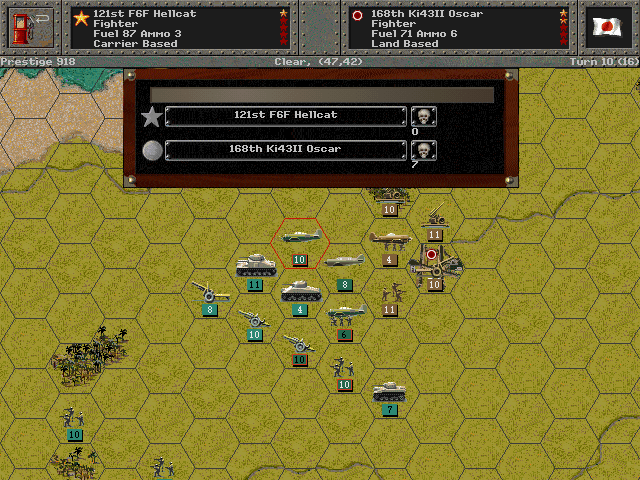
We draw close to the Kwajalein airfield, and down another squadron of Oscars.
Axis Turn 10 (Japan): February 3, 1944
Cloudy, Dry
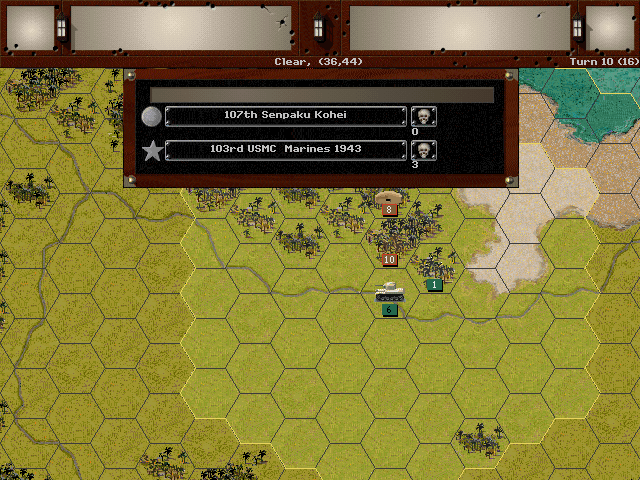
Those troops at our rear on Kwajalein are getting more dangerous. The tanks will need to take care of them now.
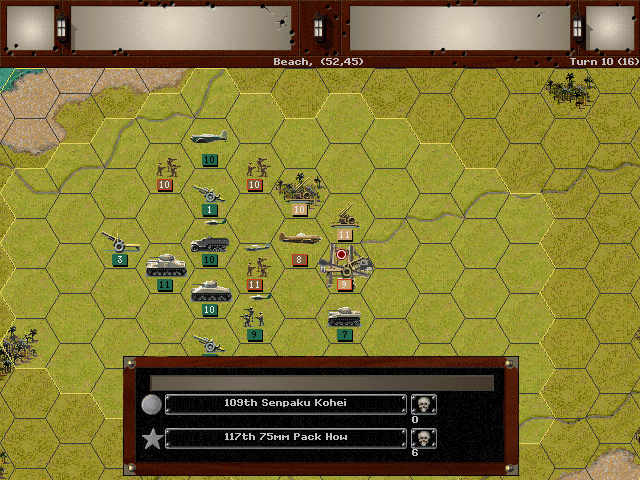
High losses are taken as the enemy breaks through and disrupts the artillery line.
Scenario Gripe #438: It may sound crazy, but I left them open to attack deliberately: the units can't be resupplied without moving away from the enemy, resupplying and then moving back - but they can actually get more ammo and regain strength in one turn, as long as they take enough damage.
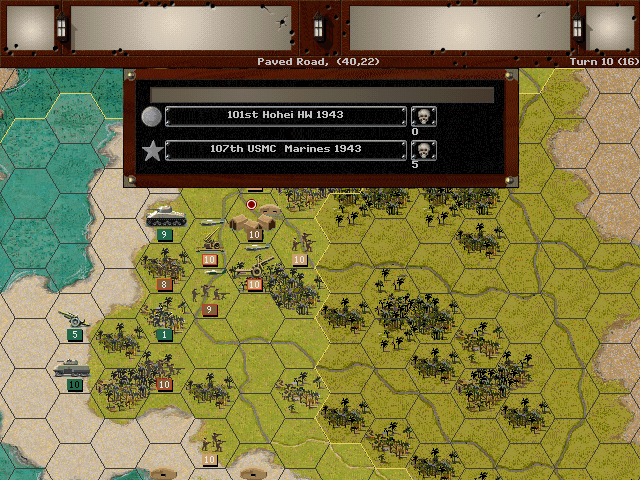
A very determined attack comes at the units on Eniwetok. Our front line has almost disintegrated.
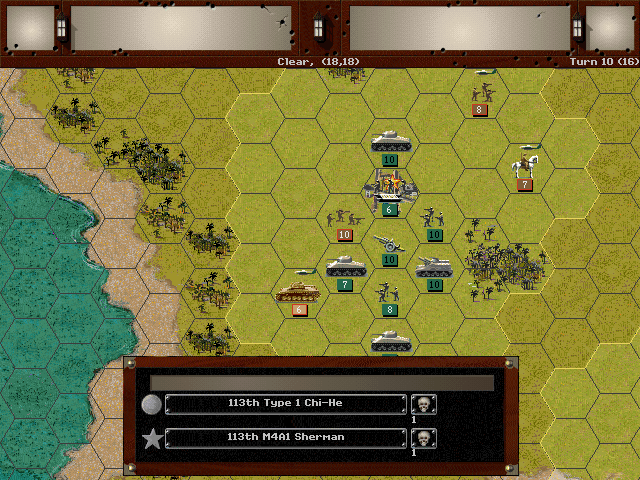
What looks to be the last of the enemy tanks is still being a nuisance back near the airfield.
Allied Turn 11 (USA): February 3, 1944
Cloudy, Dry
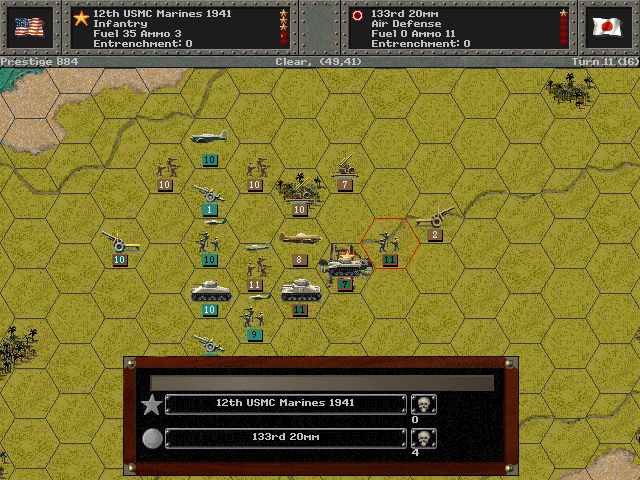
As the artillery recover, the airfield on Kwajalein is seized.
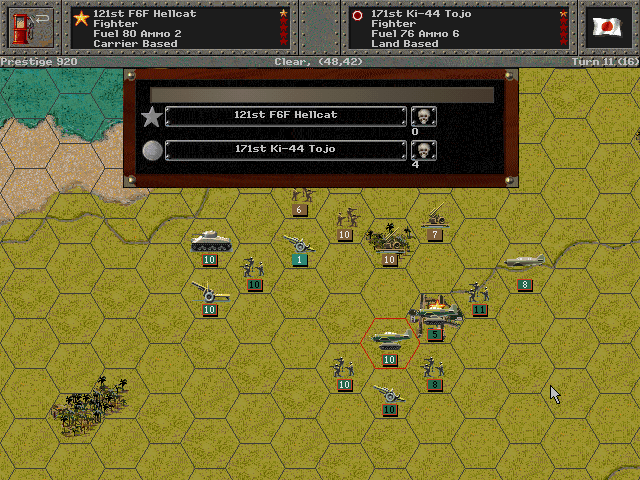
That also spells the end for the few remaining enemy fighters.
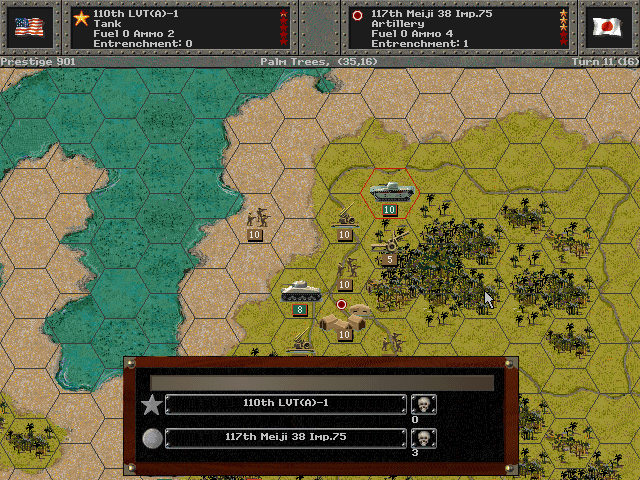
While the infantry to back up the attack are lacking, we are at least threatening the headquarters on Eniwetok.

The few pillboxes near Tokio Pier are being cleared out.

The enemy armor is finally taken out. Most of this force can now head to the other end of the island.
Axis Turn 11 (Japan): February 3, 1944
Cloudy, Dry
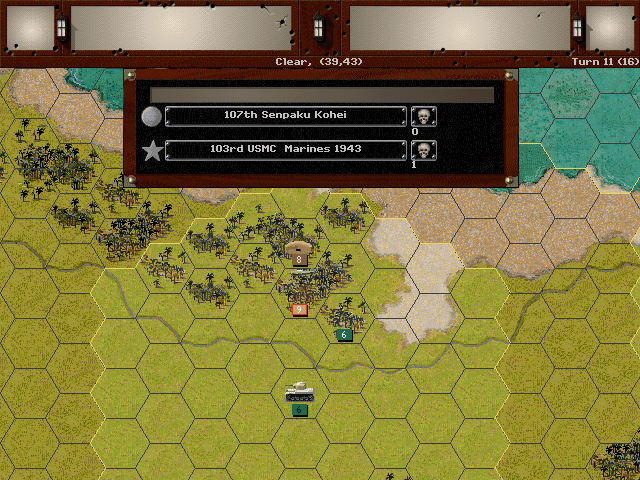
Kwajalein is mostly quiet, except back in the rear lines.
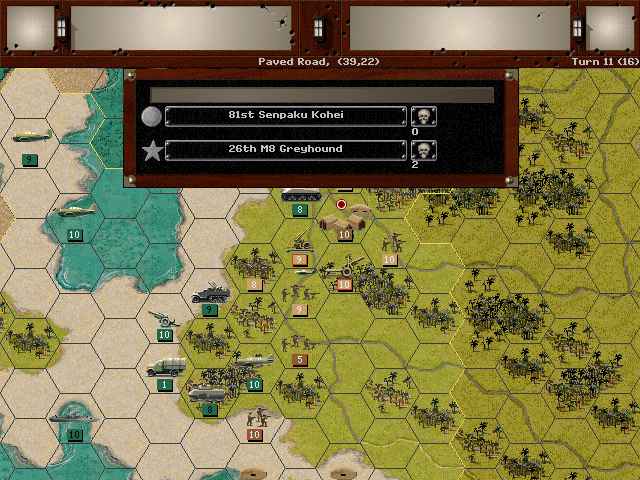
On Eniwetok, we're now being pressured from the southeast.
Allied Turn 12 (USA): February 3, 1944
Cloudy, Dry Night
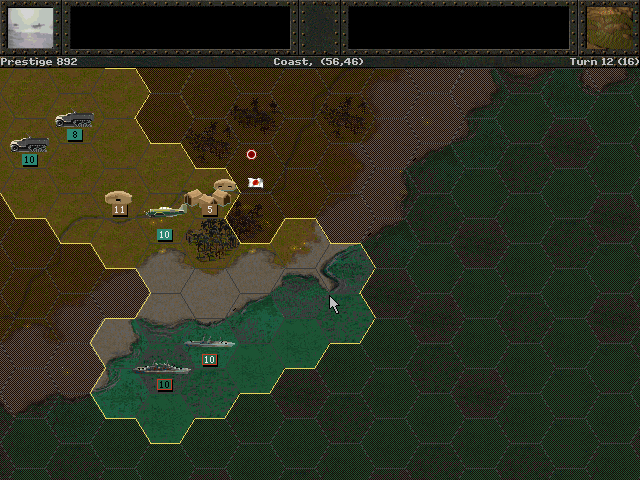
We use the cover of darkness to advance close to the southern HQ on Kwajalein.
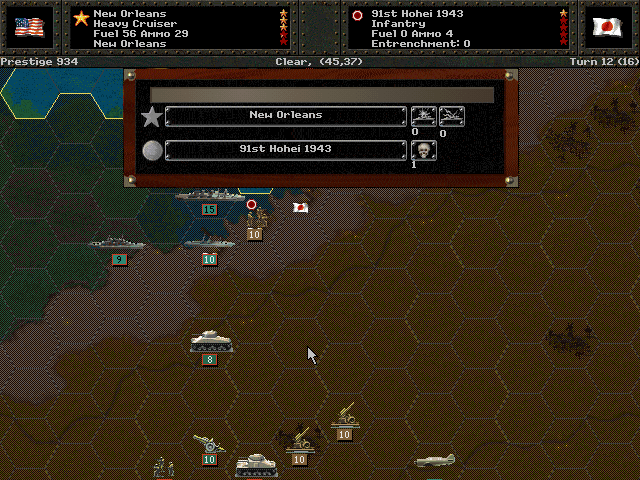
The rest of the troops approach the Center Pier as the cruisers rain down shells on the enemy.
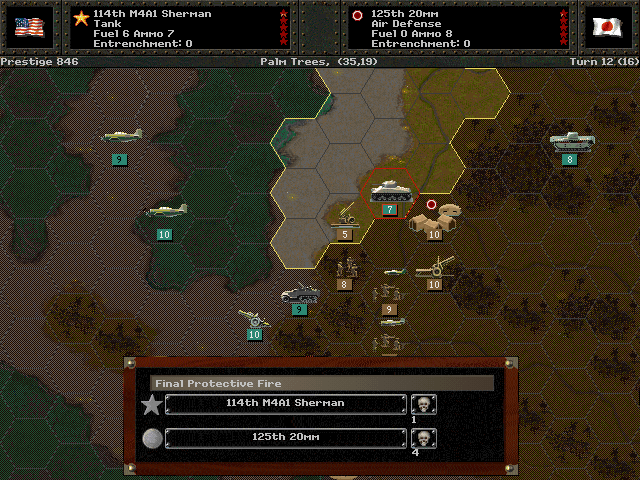
Our tanks have been cut off on Eniwetok; they try to open up a connection by destroying some flak guns.
Axis Turn 12 (Japan): February 3, 1944
Cloudy, Dry Night
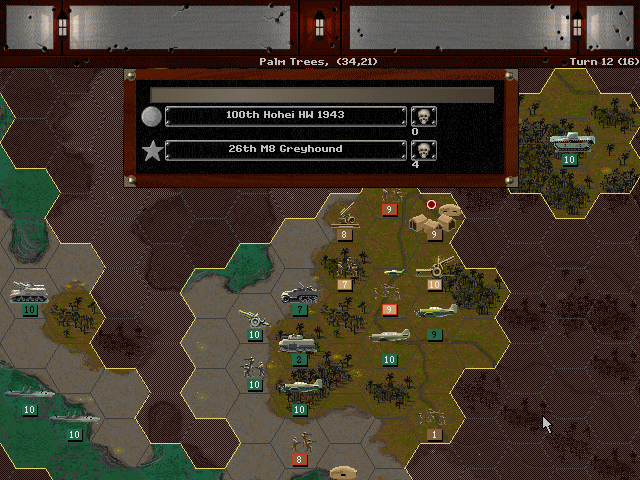
Strong counterattacks push us back from the Eniwetok HQ once again. They seem desperate to defend it for some reason.
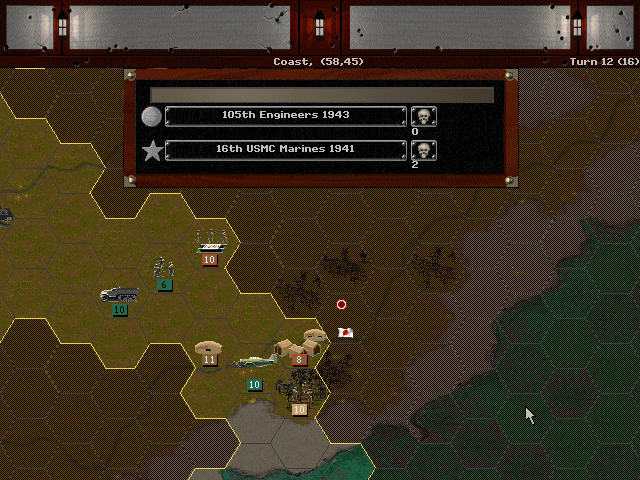
Our movement forward is not unnoticed, and the Marines take some losses before scrambling into defensive formation.
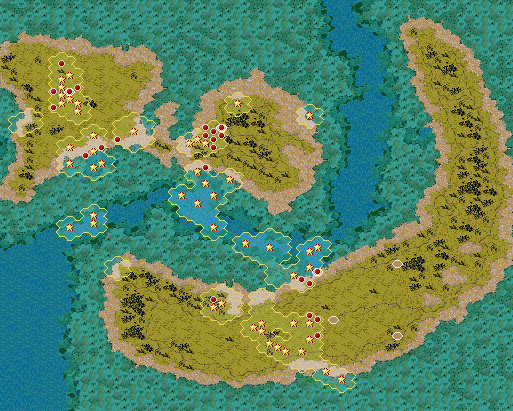
Unit Spotlight
M2A1 105mm Howitzer
PG Name: 105mm How Type: Artillery
Effective Date: 8/42
Value:8 Cost:168 Spot:1 Move:1 MM:Gun Trans:Naval Fuel: 0
Init:1 Range:3 SA:16 HA:8 AA:0 NA:0 GD:2 AD:6 CD:0 TT:Hard Ammo:8
The 105mm gun was considered a medium gun in the interwar period when it was first prototyped and developed. When the US entered the war in 1941, it began to be thought of as the low end for field artillery. The final modifications produced the M2A1, and it was found to be highly accurate and effective in combat. The gun became the base-level standard artillery that units could rely on; it went on to be acquired by many countries around the world and likely remains in use even today.
In-game analysis: This is still light artillery, but it's a good step up from the 75mm. It has decent ammo capacity and no problem blasting infantry. As a defensive protection in cities, it's probably the best value. I don't get too excited about it, though.
New Orleans-class Cruiser (7 built)
PG Name: New Orleans/New Orleans 1944 Type:Heavy Cruiser
Effective Date: 1/36 / 1/44
Value:9/10 Cost:162/180 Spot:2 Move:6 MM:Deep Naval Fuel: 78
Init:4 Range:3 SA:5 HA:8 AA:[8]/[12] NA:18 DA:0 GD:18 AD:9 TD:10 TT:N/A Ammo:40
Special: [1944 only] Night Optics
As the Northampton class hadn't quite reached the limit of the Naval Treaty on tonnage, these were the follow-up design; they added extra armor without significantly sacrificing speed. This model ended up being favored over the Northampton, and the last two were built in 1933-34. Three of them were lost in a single night at Savo Island. The ones that remained were updated in 1943-44 with a rebuilt bridge (and a removed conning tower) to aid in stability; no more were lost in the war.
In-game Analysis: This is a slight improvement over the Northampton, and I'd say the slight extra expense is equal to the value you get. I do tend to favor better units (as long as they're not overpriced), so this one is more attractive, bearing in mind that the American Heavy Cruisers are best at being close-range escorts. The 1944 version doesn't seem particularly worth it to me, since the addition of Night Optics doesn't add much.
Lockheed P-38 Lightning
PG Name: P-38 Lightning / P-38J Lightning Type:Fighter
Effective Date: 7/43 / 3/44
Value:43/33 Cost:516/396 Spot:3 Move:10 MM:Air TT:No Fuel: 102/153
Init:5/6 SA:5/7 HA:4 AA:16 NA:0 GD:11 AD:17/14 Ammo:7
In the same category that the P-39 Airacobra was attempting to compete (high-speed interceptor), Lockheed's P-38 also featured unusual design choices, but they turned out to work excellently. The P-38 was one of only a few fighter aircraft to attain high performance with two engines. It could outrun and outclimb the Zero, as well as most other planes of the time. Its weaponry was also powerful, with a high-caliber cannon in addition to machine guns. Later models were able to carry bombs, and combined with the cannon that made the plane deadly on ground attack missions as well. The P-38J improved the engine arrangement to up the top speed, although it was actually the later P-38L that became the most common variant. The original P-38 was available in 1940, so the in-game model likely represents the P-38F which was specifically intended to withstand the humid conditions of the tropical Pacific.
In-game Analysis: While definitely pricey, this makes for a fighter-bomber that can capably go on the offensive. Once stronger enemy fighters show up it probably shouldn't be sent out alone, however, as it can make for an attractive target. Although this was a stand-out in Allied General, it's lost a lot of its luster in this game thanks to the existence of the similarly capable (and cheaper) F6F Hellcat. The updated model, while not as expensive, also loses one of the plane's best features, namely it's high defensive value.